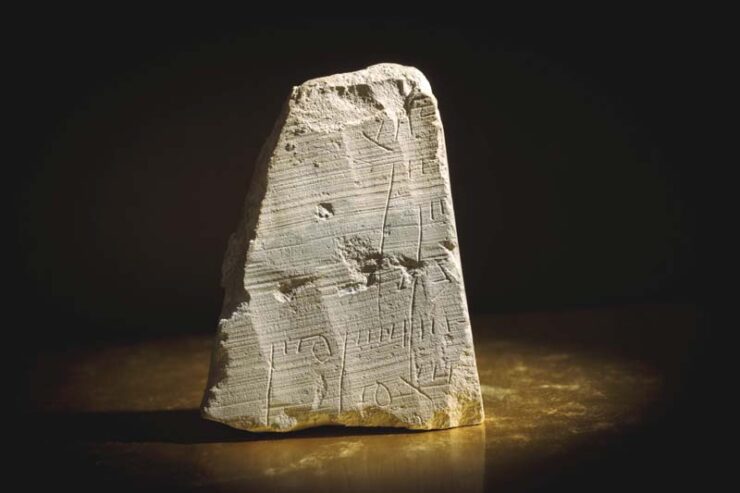The Israel Antiquities Authority reported Wednesday that a financial record from two millennia ago was discovered on what was once Jerusalem’s major road during the Second Temple era. The independent governmental archaeological organization stated that the writing on the little stone tablet discovered on Pilgrimage Road at the City of David site was possibly a receipt or a payment instruction made by a person involved in commercial activity during the Second Temple era.
The tablet, which was inscribed with letters and figures, was found in what was once thought to be a busy business district. The Hebrew letter mem is placed after the final letter of the name “Shimon” in one line, while numerals are represented by symbols in the other lines. Some of the numerals are preceded by their monetary value, which is indicated by the letter mem, which is short for ma’ot (Hebrew for “money,” or by the letter resh, which is short for reva’im (Hebrew for “quarters,” respectively).
According to an article in the archaeological magazine Atiqot, four identical Hebrew inscriptions with names and numbers engraved on comparable stone slabs and belonging to the Early Roman era (37 BCE to 70 C.E.) have been discovered in Jerusalem and Bet Shemesh. But to date, this is the earliest inscription discovered inside the walls of Jerusalem at that period.
The writing, according to the JNS, was etched with a sharp chisel into a slab of chalkstone (qirton). It appears that the stone slab was first used as an ossuary (burial chest) a frequent practice in Early Roman Jerusalem and Judea.
The exciting find was made on the Pilgrimage Road near the lower city center. The road, which was about 660 yards long and functioned as Jerusalem’s primary roadway, connected the city gate and the Siloam Pool region in the south of the City of David to the gates of the Temple Mount and the Second Temple.
The stone tablet with the inscription was found in a tunnel of an earlier excavation at the location, which was carried out towards the end of the 19th century by British archaeologists Frederick Bliss and Archibald Dickie.
Although the inscription was discovered outside of its original archaeological context, the Antiquities Authority said that based on the type of script, the type of stone slab, and its similarity to other contemporary inscriptions, it was possible to date it to the Early Roman period, at the end of the Second Temple period.
According to the researchers, “the everyday life of the inhabitants of Jerusalem who resided here 2,000 years ago is expressed in this simple object. At first glance, the list of names and numbers may not seem exciting, but to think that, just like today, receipts were also used in the past for commercial purposes, and that such a receipt has reached us, is a rare and gratifying find that allows a glimpse into everyday life in the holy city of Jerusalem.”
“The remarkable discovery on the Pilgrimage Road in Jerusalem uncovers another aspect of Jewish life in the city from 2,000 years ago. The unique excavations in the area position the City of David as a pivotal center in the Jewish people’s global historical narrative.” said Rabbi Amichai Eliyahu who is the Minister of Heritage.
Eli Escusido, director of the Israel Antiquities Authority, said, “It is not a coincidence that the many discoveries which are being revealed in the excavation shed light on the centrality of this road even during the Second Temple period. With every discovery, our understanding of the area deepens, revealing this street’s pivotal role in the daily lives of Jerusalem’s inhabitants 2,000 years ago.”
